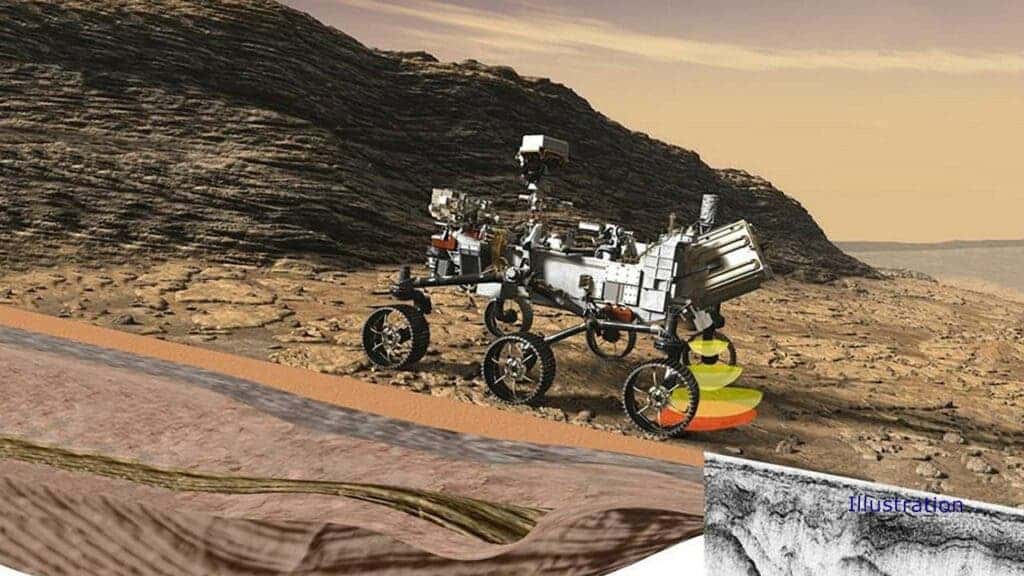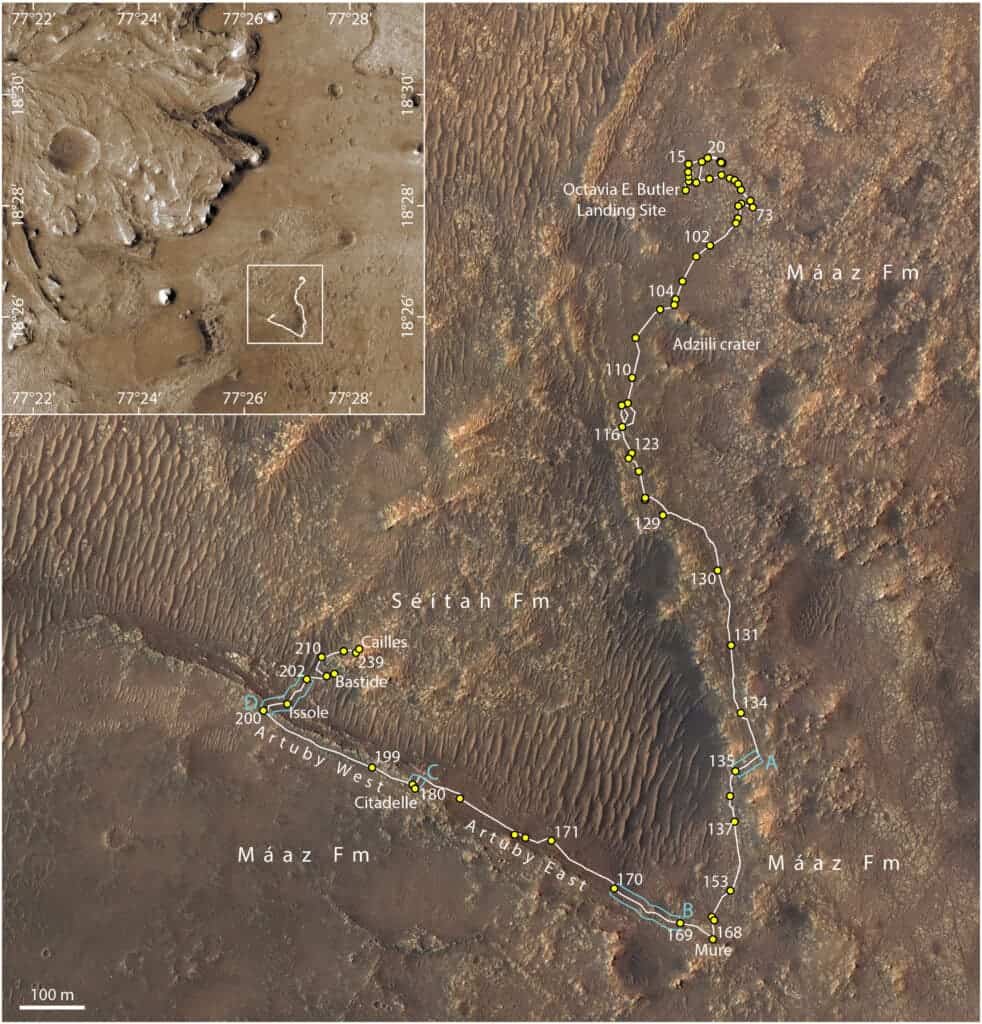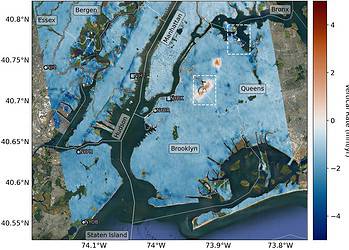When the Perseverance rover landed on Mars, it didn’t only bring instruments to look for signs of life, it also brought a radar. Called RIMFAX, the radar is different from other instruments because its main goal is not to look for signs of life, but rather to look at what lies beneath the surface. Now the radar has offered a glimpse of the layers that lie under the regolith, and there are already some surprises.

Using radars to image the subsurface isn’t a new thing. It’s been done on Earth for decades, commonly used to find archaeological objectives or perform some environmental monitoring. However, it’s the first time this type of radar has been deployed to another celestial body. The device sends out downward pulses of radar that reflect back to the rover. This is not the same type of radar that’s used by satellites orbiting Mars– it’s the same physical principle, but because this radar is on the surface of Mars, and operates on a different frequency, it offers much better detail and resolution.
During Perseverance’s initial 3-kilometer traverse, the radar has been continuously measuring, gathering data from up to 15 meters (49 feet) deep. The rover traverse took place on the western edge of Jezero crater, once a lake fed by a river — an ideal place to look for signs of life on Mars. Perseverance passed over the delta where a river once fed this lake, leaving behind a deposit of distinctive rocks and dirt.

Researchers were expecting to find horizontal layers of rocks, but that’s not at all what they observed. Everywhere they looked, they found layered rock strata, but many were tilted at an angle of up to 15 degrees.
Compounding the mystery, within those inclined areas are some perplexing highly reflective rock layers that in fact tilt in multiple directions.
“We were quite surprised to find rocks stacked up at an inclined angle,” said David Paige, a UCLA professor of Earth, planetary and space sciences and one of the lead researchers on the Radar Imager for Mars Subsurface Experiment, or RIMFAX. “We were expecting to see horizontal rocks on the crater floor. The fact that they are tilted like this requires a more complex geologic history. They could have been formed when molten rock rose up towards the surface, or, alternatively, they could represent an older delta deposit buried in the crater floor.”
Based on the observed slope, thickness, and morphology of these rock layers, NASA researchers say there are two theories for what these rocks can be: either a magmatic layering, formed from an igneous body or a sedimentary layer formed in the presence of water. Both of these environments are also found on Earth, and both are intriguing in their own way, as they hint at abundant volcanic activity and potentially, multiple aquatic events.

“RIMFAX is giving us a view of Mars stratigraphy similar to what you can see on Earth in highway road cuts, where tall stacks of rock layers are sometimes visible in a mountainside as you drive by,” Paige explained. “Before Perseverance landed, there were many hypotheses about the exact nature and origin of the crater floor materials. We’ve now been able to narrow down the range of possibilities, but the data we’ve acquired so far suggest that the history of the crater floor may be quite a bit more complicated than we had anticipated.”
The most exciting part about this is that the radar survey is only just beginning. As long as Perseverance keeps going, we can have more underground information about Mars, and the results are bound to be exciting.
“RIMFAX is giving us the backstory of the samples we’re going to analyze. It’s exciting that the rover’s instruments are producing data and we’re starting to learn, but there’s a lot more to come,” Paige said. “We landed on the crater floor, but now we’re driving up on the actual delta, which is the main target of the mission. This is just the beginning of what we’ll hopefully soon know about Mars.”
The study was published in Science Advances.






